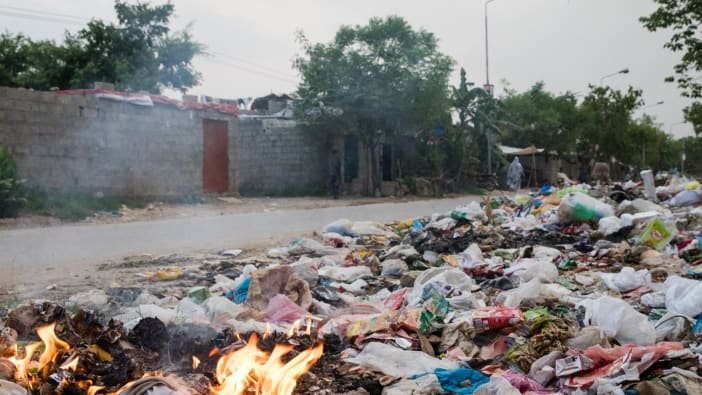Farmers and gardeners use compost to improve their soils and increase plant growth. Compost is made from plant and food waste, which is broken down by worms and other organisms. It needs enough oxygen (from the air) and the right amount of moisture. Below is one method for making compost.
1 Make a heap
A compost heap does not have to be contained in anything, but it is easier to manage if it is. You could use a pit, a slatted box or chicken wire. Aim for a minimum of 1 metre in each direction. It is useful to have two or three heaps so that material can be added to one while the other is breaking down. In dry areas, make compost in a pit. In wetter areas, make your heap above the ground. In cooler climates, make the compost in a sunny position. In hot, dry climates, place it out of direct sunlight. Make heaps on well-drained soil or grass, avoiding concrete.
2 Layer it up
Use a good mix of so-called ‘brown’ and ‘green’ materials (see below). If you live in a wet area, make a base layer of stones and twigs to allow drainage. Start with a layer of brown followed by a layer of green materials. If available, you can add a thin layer of manure and a thin layer of top soil. Then repeat these layers. Add water if the materials are dry. Do not use: non-organic waste, meat, bones, oils, dairy products or faeces from meat-eating animals (eg dogs and cats) or humans as these contain harmful bacteria. Avoid adding recurring weeds or diseased plants.
3 Let it heat
Cover the compost with a tarpaulin, mud or wide leaves (eg banana). This helps to keep moisture in when it is hot and prevents the compost becoming waterlogged when it rains. Do not let it dry out – add water if necessary. The heap should become warm in the middle.
4 Turn regularly
Keep the compost full of oxygen by turning it every few weeks. There is no need to keep layers separate.
5 Dig it in
When the mixture turns dark brown/black and crumbly with an earthy smell, the process is complete. This may take two months to a year. Dig it into your soil and enjoy the results! You could try selling your compost to farmers or agricultural stores (sieve it so it is fine enough).












